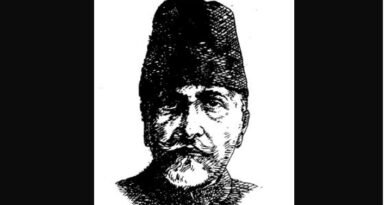Railways show the way
Inter-city AC trains resume to inject lifeblood in a nation’s public transport system and codify how to live with the virus
The prolonged lockdown and the slowly peaking disease spiral have extracted a ransom beyond our capacity. Public health continues to be a concern in States as the fatigue and desperation of a lockdown mean there are more violations and people are getting out. And with the economy in stasis, now there is no option but to open it up and risk a percentage swell in disease figures than have thousands die because of joblessness and zero revenues. In essence, the Government is counting on a dual strategy. One is to facilitate the economy by allowing movement of labour and people and restart projects and production. Second, with a better depth of testing, hopefully it can identify the disease early enough and tame the virus even if there is a surge of cases. But the most important communication strategy to citizens is that they have to now live responsibly with the virus, follow norms strictly as the Government moves away from the role of enforcer of discipline to being a facilitator of governance and the economy. So in a carefully graded manner, the Government is opening up the public transportation system, beginning with long distance AC trains and linking destinations regardless of the colour coding. Till now only freight services to transport essential goods and ‘Special Shramik’ trains were operational. The idea of inter-city AC coach travel is clearly aimed at boosting revenue and facilitating need-based travel for business and family matters. There’s an emotional component that everybody has neglected, that of the right of far-flung people wanting to be with their family in the nation’s darkest hour. In fact, the newly-formatted train travel will change the way we access India’s other mass transport systems. There will be e-bookings and tickets, possibly some QR codes going forward. There will be no counter tickets or even platform tickets, so no more seeing off rituals. Passengers will have to report 90 minutes before the departure of the train, undergo screening drills and wear face masks at all times. Of course, there will be limits to passenger numbers to maintain social distancing norms. One has to carry one’s own food and linens as no blankets or food involving touch will be distributed. The 15 pairs of trains running from New Delhi will connect the far reaches of the country but are just a drop in the ocean. The Railways ran more than 20,000 passenger trains daily, on both long-distance and suburban routes, from 7,349 stations across India. But this is just a start. They will roll out more trains over the coming weeks once ‘Shramik Special’ trains, carrying thousands of internal migrants back, as well as the coaches for quarantine centres, are accounted for. The Railways have been preparing the drill weeks ahead at most stations as the new normal means more public wardens, railway police and a logistics systems to restrict overcrowding in platforms and ensure people comply with behavioural discipline. Besides, considering the virus thrives in enclosed and conditioned spaces, sanitisation and disinfection of compartments, particularly filtering the air ducts, will be a time-consuming drill.
India’s transportation system is its lifeblood. Running trains, buses and planes is a prerequisite for the country to get moving again. It also demonstrates our resolve to begin the long march to some semblance of normalcy. Local buses and trains might start functioning in green and even orange zones. Unfortunately most large cities across India are COVID-19 hotspots, so it might be a while before a substantial public transport system gets going here. Also some movement might be accelerated in contiguous safe stretches, creating micro-zones. Even the aviation sector is set to open with drills and assessments in place. To begin with, flights will operate in just 25 per cent of sectors with less than two hours of travel and would not provide catering services. Flyers have to compulsorily download the Aarogya Setu app, developed to track COVID-19 patients. However, the same app would be voluntary for train passengers, keeping in mind the general and second class travellers may not have smartphones. Countries across the world are gradually easing lockdown provisions and restrictions on domestic long-distance travel. It might be months before nations open their borders to businessmen and tourists but getting trains and planes running is essential towards the resumption of the economy that’s congealing rapidly. This has been an unexpected and devastating situation and getting out will take a lot of effort from governments, bureaucrats and the public at large. We should not even pretend it will be easy and applaud the Railways for their move. That said, we should not at any time let our guard down, we have already paid a terrible price for this virus, millions of shattered lives and a destroyed economy. Let’s not lose what we’ve gained from the lockdown.
Source: The Pioneer




